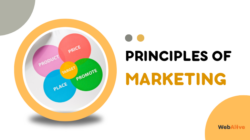
How to Create an Effective Content Strategy for 2021
It’s 2021, and you need to be putting your best foot forward when creating your website content. Content marketing is becoming more and more popular and, if you want to stay competitive and give your business the best chance of success, it’s worth putting some time into making a plan that will help you create high-quality content on a regular basis. One of the best ways to do this is by creating a content strategy, which can help you achieve many of your business goals and earn your audience’s trust!
Here, I’m going to take you through the main steps that will help you to create an effective content strategy. Take these tips on board and you could boost your search engine rankings, earn a lot of new fans, and boost your sales significantly. Read on to find out more.
Conduct a content audit
To begin planning your content strategy, you need to conduct a content audit in order to assess how you’ve been doing so far. A content audit involves taking a look at all the existing content on your website in order to gather information about what’s been working, what hasn’t, and what your next steps should be. You can use this information to inform how you’re going to improve your SEO results, increase your audience engagement, and boost your conversion rates going forward.
You can conduct a content audit manually by gathering all of your data, organising it, and compiling it in a spreadsheet to find patterns and insights, but there are also a lot of online platforms, like SEMRush, that will do this legwork for you. From there, you can put together an action plan. Do you need to focus on a different type of content? Do certain topics gain more traction than others? By conducting frequent audits, you can answer these questions and fill in the gaps for your customers.
You also need to ensure you are running regular maintenance on your website, otherwise, people won’t stay long enough to read your fantastic content. No one wants to browse or buy from a glitchy, slow-loading site. Check out WebAlive’s guide on website management, where they have tips on database optimisation, website backup, what to do about cyberattacks, and more.
Set your goals for the year
Before you start putting together a content strategy, you need to know exactly what goals you have in mind. This will help you develop a concrete plan to achieve them and grow your business.
Consider using SMART goals — this is an acronym that stands for specific, measurable, attainable, relevant, and time-based. Whether you’re trying to increase brand awareness, build customer loyalty, generate sales, or something else altogether, take a look at your data to measure where you are, and set a goal on how you can improve. Vague goals like “I want to sell more” can be hard to measure and achieve. So, consider coming up with something along the lines of, “I want to sell [quantity] products by [date]”.
If you have a lot of single-purchase customers or one-time viewers, you might want to work on nurturing your existing leads. There might be something about your website — like a slow loading page, for instance — that discourages your customers from visiting again. This is something you should consider working on when nurturing your leads!
More than likely, your overall goal will be to secure more sales and make more money from your business. Figure out what you need to prioritise, and your sales are likely to increase as a result. This is where a content strategy will usually come into play. So, after you conduct a content audit, set SMART goals and decide what kinds of content you need to make with these in mind.
If you already have a lot of people viewing your content, but they aren’t sticking around to make a purchase, you’ll want to make some changes to increase your conversion rate. WebAlive has a guide to conversion rate optimisation that will help you to maximise the value of the traffic you’re already getting. Take a look at their article if you need help in this area.
Decide what types of content you’ll focus on
After you’ve analysed your existing content and decided on your goals for the year, it’s time to figure out what types of content you want to create. Quality is better than quantity, so be sure to not spread yourself too thin. Focus on a handful of content types that you think will resonate with your audience. Here are some of the most popular types and how you might decide to use them.
Ultimate guides
Depending on your niche, you might be able to create an “ultimate guide” that’s relevant to your field and offers information that people won’t be able to find anywhere else.
Venveo’s guide on marketing to architects is a great example of a valuable and comprehensive guide that covers a relatively niche topic. The company’s target audience are building material manufacturers and the like, who will probably have a lot of questions about this subject. In their guide, Venveo is able to show off their team’s expertise, target a lot of keywords their ideal customers might be searching, and build trust with whoever comes across it. This also has the added benefit of positioning them as experts in their industry, which is great for both SEO and sales purposes.

Similarly, HubSpot, a popular content marketing brand, has its own definitive guide on Facebook marketing. Because they have established themselves as a leader in their industry, it makes sense that they would expand into talking about social media marketing. It’s more than likely that their customers are looking for guides on how to manage both their on-site and social media strategies, and branching out could also help them reach different customers who might be interested in their software.

Blog posts
Blog posts offer a great way to gain more web traffic, because they’re ideal for sharing on social media, and could also rank well on search engine results pages if they’re well-optimised. Additionally, they provide a great way to engage with and inform your audience.
Consider SEMRush’s extensive blog on SEO and content marketing. This is where they publish a variety of articles in their niche, and you could adopt a similar strategy for your website, even if you’re working in a totally different industry! Create a keyword list (I’ll explain more about this later) and research different topics that your potential customers are looking to learn about. By writing articles on these subjects, you can give your SEO a boost and gain more organic traffic.
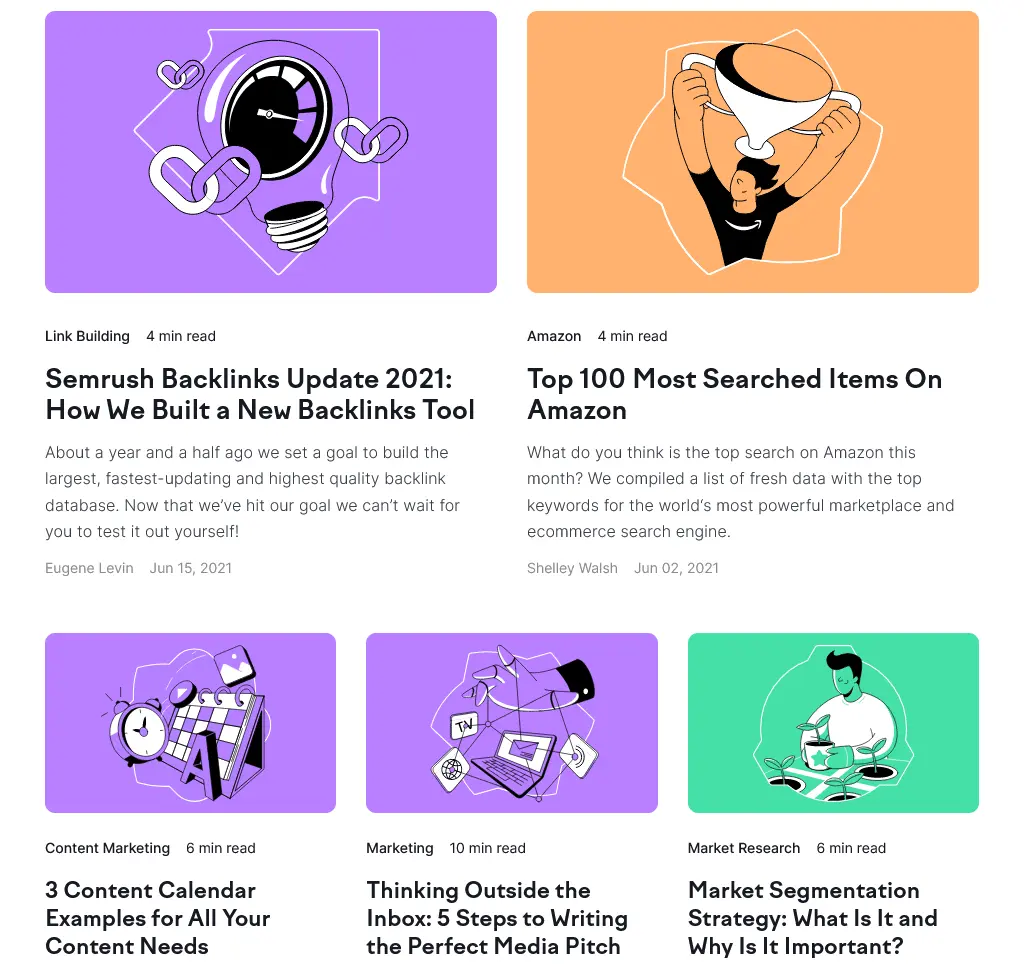
Tutorials
Depending on the type of business you run, you might be able to help your audience achieve their goals or improve their skills with some step-by-step guides or tutorials.
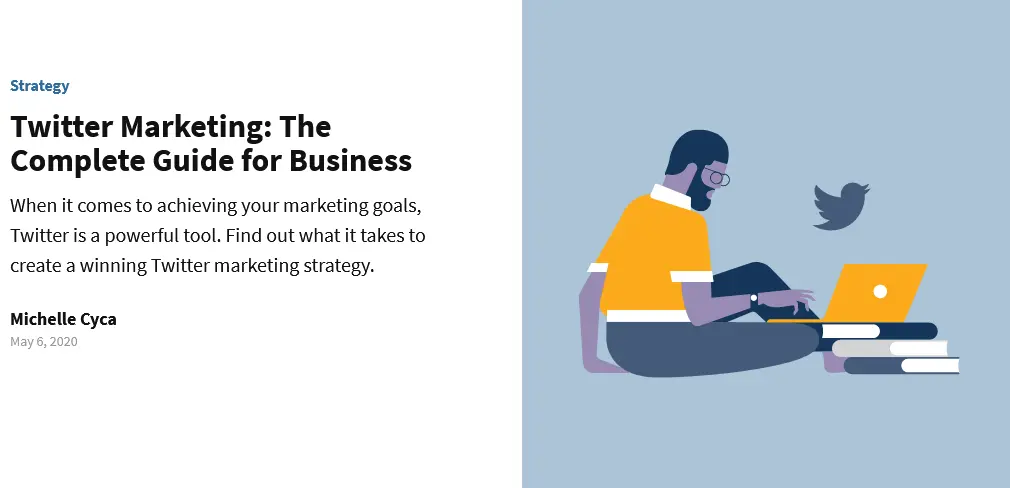
HootSuite is a company that offers a very popular social media scheduling and analytics tool. And they have a blog where they provide various guides on how their target customers can get the most out of their social media marketing. For example, they have a tutorial on how to use Twitter in your marketing campaigns, which covers how to conduct account audits, ways to set your SMART goals, how to carry out competitor research, and more. This is likely to be very valuable information for their ideal customers.
Consider your expertise and what you can advise your target audience about. Then create some how-to guides that will show what you can do, build trust with customers, and rank highly on the search engine results pages for relevant queries.
Round-ups
Round-ups are another common form of web content, which allow you to get a lot of information across in a simple and engaging way.
Consider Best Nursing Programs’ list of the best second-degree nursing programs on offer. Because it’s been written for aspiring healthcare workers, it’s very straight to the point and provides just the right amount of information about a topic that’s relevant to the company.
Content like this can be very beneficial for businesses in a lot of different industries, whether you’re an electronics retailer talking through the latest smartphones, or a fashion retailer rounding up the latest designer collections.
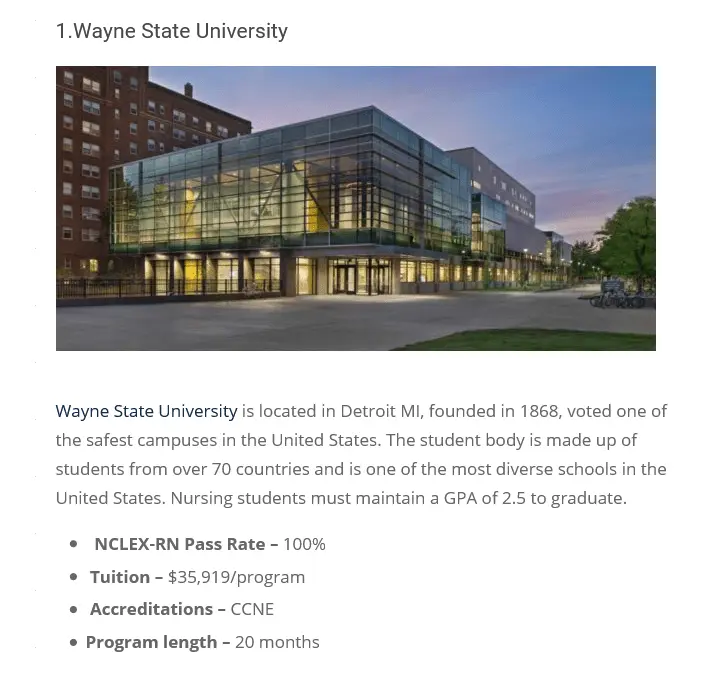
The idea is that you’ll be making life a lot easier for your target audience. For example, in the case of Best Nursing Programs’ round-up, they’ve provided all of the information prospective medical students will need to narrow down their list of universities. So, instead of having to visit 20 different schools, they can choose two or three they’re actually interested in from all of the stats and details they can find in one place.

In a similar vein, LaptopMag.com has an article on the Best Laptops for 2021. This is clearly targeting popular searches around the best laptops for this year, and provides a lot of information in one place, without being too overwhelming.
Would creating round-ups make sense for your business? They can be great for SEO and building trust with your target audience.
Comparison pieces
You can also help your audience make a choice between similar yet competing products in your niche with buying guides or comparison pieces.
This is a common tactic for In VPN, which is a website that frequently compares popular VPN providers that their audience might be considering spending their money with. Take their piece that looks at SurfShark vs NordVPN, for example.
Not only does the site provide an in-depth write up about each one, but it always creates an easy-to-read table that sets out all of the most important facts and figures a reader might be interested in. This is a great technique if you want to communicate a lot of information to your readers in an easy to digest way.
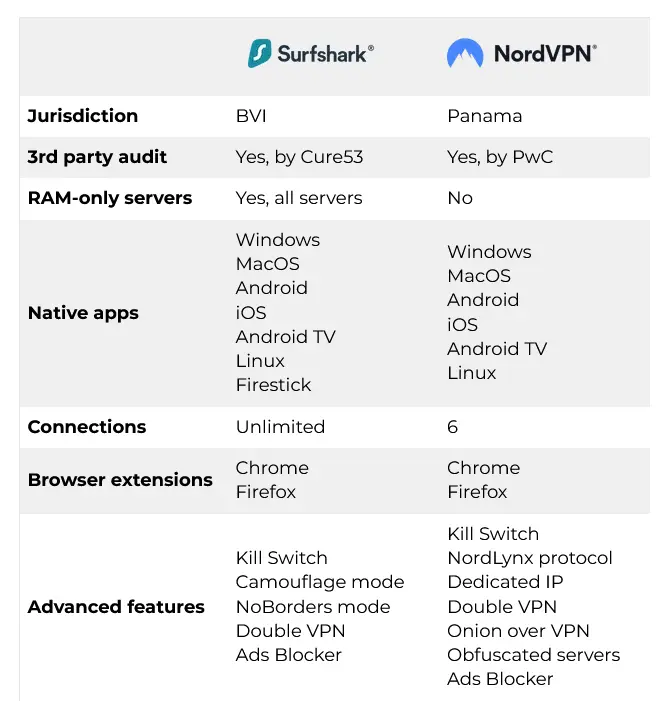
The Motley Fool is another site that offers a series of software reviews and comparison pieces that are relevant for their audience. For instance, their article about Sprout Social and Hootsuite explains that, while both options are great, customers are likely to prefer one over the other, depending on their specific needs.

The piece goes into detail about the different features each option offers, and what kinds of professionals tend to use each one. This helps to build trust among the website’s audience and also positions The Motley Fool as an authority in its field.
Think about whether reviews and comparison pieces would make a great addition to your website and help to grab the attention of both search engines and your ideal audience.
Infographics
Infographics are bright, colourful, informative, and easy to share. If you have a lot of stats, data, or tips you would like to get across to your audience in an engaging way, consider creating your own.
If you aren’t sure where to start with this, Venngage has a variety of free infographic templates that you can use! Infographics are great for SEO because people are more likely to share straightforward content.
When people share your content (such as an infographic) on their website, they should provide credit with a link, which will help to build your backlink profile and improve your rankings on search engine results pages. In short, Google and other search engines take shares and backlinks as a vote of confidence so, if your brand is getting a lot of backlinks from high-quality websites, Google will be more likely to point people in your direction. This can drastically improve your online visibility and earn you more customers.
Recipes
If relevant to your business, you could also add recipes to your website. Ketoned, for instance, offers a keto-friendly meal delivery service. In order to build trust with their customers, they provide free recipes through their blog and Instagram.
Consider what Ketoned’s customers might be searching on the web. Their ideal audience are people aspiring to achieve a healthy and active lifestyle, so their searches might include things like “keto breakfast ideas” or “keto dessert recipes”. These are all topics the company can cover with recipes and advice.
HelloFresh is another popular meal kit provider, which also does this nicely. Their customers are likely looking for easy-to-make dinner options, and the recipes section on their site can help people find them through search engines. “Kid-friendly recipes” and “gourmet recipes” are both searches that lead to their website and encourage customers to sign up for their service.
Videos
With more and more people using smartphones to navigate the web, video content is a must-have. Videos are very easy to view on mobile and don’t usually require as much time as reading a full-length article. Plus, different target customers will consume content in different ways, so creating various types can help you to attract as many people to your site as possible.
Neil Patel, a prominent content marketer, has a successful YouTube channel in addition to his popular blog. The YouTube channel supplements his website, and vice-versa. For those who don’t want to get started by reading a long series of blog posts, they can get a quick run-down of his advice in a video.
You could also consider live streaming (on Facebook, for instance) as a form of content marketing. It’s a great way to interact with your audience (think presentations and Q&As) in real-time. You can treat it like an event and get viewers excited about it on social media all week long, for example!
Don’t forget about your blog, though. They’re still a vitally important part of content marketing and are great for improving your Google visibility, showing your expertise, and more.
Choose your target keywords carefully
Next, you need to choose what keywords you’re going to target with your content. Targeted keywords are phrases that your customers will be searching when they’re looking for guides, products, or services like yours. If you create high-quality content that, for instance, answers a question people in your niche are searching for, you can boost your search engine rankings and reach more relevant people along the way.
Consider how your audience would be searching for topics that are relevant to your niche. What are the questions they are asking? And then consider creating content that helps answer these queries. Basing your content on these question keywords can help you improve your SEO ranking. For more information, check out Loganix’s guide to question keywords and semantic search.
If you would like more information about creating content with SEO in mind, take a look at WebAlive’s guide to website optimisation, which offers all of the tips you’ll need to make your site the best it can be.
Create a content calendar
Keep your audience engaged by publishing a steady stream of content on your website. Planning everything in advance can really help with that, and this is where content calendars come in.
Make a note of different events and holidays that you can centre timely content around. Publishing relevant content around product launches, industry events, or company celebrations can also bring new traffic to your website.
But be sure to schedule evergreen content as well, so you can fill any gaps in your calendar and target keywords that aren’t necessarily tied to a particular date.
Decide how you’re going to promote your content
Finally, you need to figure out how to promote your content. You can create the best content in the world but, if you aren’t promoting it in one way or another, people aren’t going to see it. You can promote your content through social media, by linking to it in guest posts, by featuring it in your newsletters, and more.
Pixpa is a business that does a great job of promoting their blog content through social media.

Here is one of their standard Facebook posts, where you can see a few sentences outlining what their blog post is about, with an invitation to learn more. It also features a fantastic image, which is likely to grab people’s attention and convince them to click through. The short and engaging style of this post will help attract relevant customers without being a turn-off to people not interested in that particular post.
Of course, if you’re using social media to promote your work, be sure to use relevant analytics tools to monitor the success of your content and tweak your strategy where necessary. Most social media platforms, including Twitter, Instagram, Facebook, and LinkedIn, have their own analytics pages but, if you want to get more in-depth information, SocialPilot has a list of the best paid and free social media analytics tools you can try out, as well.
There is a lot to be said about how you promote your content and run your eCommerce business to get the best results. If you would like more advice, WebAlive can help. Take a look at their top 10 eCommerce best practices, which will teach you more about making the most of your content and securing more sales.
Summary
When it comes to content marketing, you can’t be flying blind. No matter how long you’ve been running your business, it is incredibly important that you have an effective content marketing strategy in place. This can help you find gaps in your content, set new goals, build your brand authority, and improve your search engine rankings.
Now that you’re a content marketing expert, you might be thinking about some of the other strategies you can use to gain more traffic for your business. Check out the WebAlive guide to inbound marketing and learn how to form connections, solve customer problems, and further build your business.
Adam Steele is the Founder and COO at Loganix, an SEO fulfilment partner for agencies and marketers. We build easy to use SEO services that help businesses scale. If you liked this article, please check out our SEO guides and templates on the blog.
You read a lot. We like that
Want to take your online business to the next level? Get the tips and insights that matter.


